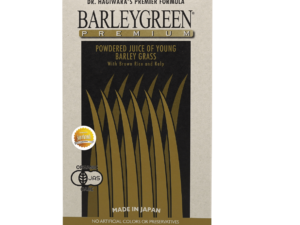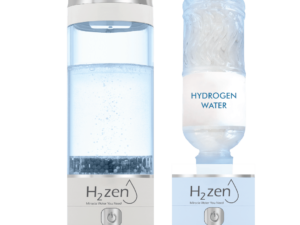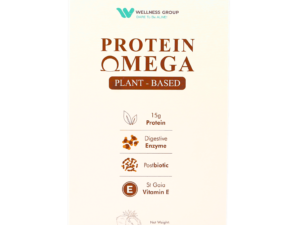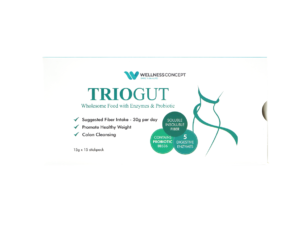Surprising fact: a 4-week randomized trial found that adults aged 30 and above showed higher antioxidant capacity and less PBMC apoptosis after consuming enriched drinking fluids daily.
Wellness Group introduces accessible solutions that link that human data to everyday life in Malaysia. The guide explains what these enriched fluids are, how they differ from inhaled molecular hydrogen, and why interest is rising in healthy aging.
The section highlights key human evidence: improved antioxidant potential, reduced immune cell apoptosis, and downregulated inflammatory gene networks in one notable study. Readers will find practical tips on dose ranges, timing, safety, and choosing quality products locally.
Contact: Wellness Group welcomes WhatsApp inquiries at +60123822655. Visit during business hours: Monday–Friday 9:30 am–6:30 pm; Saturday–Sunday 10 am–5 pm. Learn more about related uses in this short guide on hydrogen water for detoxification.
Key Takeaways
- Human and preclinical evidence supports antioxidant benefits and reduced cell apoptosis in adults ≥30.
- Products differ from inhaled molecular approaches; delivery and dose matter.
- Wellness Group offers local guidance and WhatsApp support at +60123822655.
- Safety, timing, and lifestyle choices influence observed effects.
- Readers should consult healthcare professionals for personal recommendations.
Why this ultimate guide on hydrogen water for cellular repair matters today
Rising oxidative stress linked to urban living makes clear, practical guidance essential today.
Oxidative stress drives chronic inflammation that ties into cardiovascular disease, metabolic syndrome, neurodegenerative disorders, and cancer. Maintaining ROS balance is vital because excessive radicals damage DNA and lipids and can lead to cell death.
In Malaysia, long work hours, traffic pollution, and modern diets raise daily oxidative burden. This guide explains how targeted antioxidant approaches may help protect cells while avoiding overreach.
- How selectivity of hydrogen targets the most cytotoxic radicals while sparing signaling ROS.
- How evidence moves from lab studies and animal models to human trials.
- Practical steps that pair antioxidant strategies with sleep, nutrition, and activity.
| Concern | Why it matters | What this guide shows | Local support |
|---|---|---|---|
| Oxidative stress | Links to chronic disease and inflammation | Evidence-based approaches and limits of benefits | Malaysia product guidance |
| Aging | Higher ROS vulnerability after the early 30s | When to consider adjunct strategies | WhatsApp support +60123822655 |
| Real-world use | Variability in delivery and dose | Practical timing and safety tips | Business hours Mon–Fri 9:30–18:30; Sat–Sun 10:00–17:00 |
Readers will learn to separate science-backed expectations from hype and to combine targeted interventions with healthy habits. For tailored, local advice, message Wellness Group on WhatsApp at +60123822655 during business hours.
Cellular repair 101: How oxidative stress and reactive oxygen species affect your cells
Cells constantly face chemical threats from reactive oxygen species that can overwhelm defenses. When antioxidant buffering fails, the result is sustained oxidative stress and progressive oxidative damage.
From ROS to oxidative damage: DNA, lipids, and proteins under stress
Excessive reactive oxygen leads to DNA oxidation, often measured by 8‑OHdG, which raises mutation risk and harms genomic stability.
Lipid peroxidation breaks membrane integrity and alters signaling. Protein oxidation changes enzyme function and structure, reducing cellular resilience.
When balance breaks: Inflammation, cell death, and disease pathways
Imbalanced ROS activate inflammatory cascades, creating a self‑reinforcing loop that sustains stress. Biomarkers like d‑ROMs help track this burden.
- Persistent imbalance can trigger cell death pathways such as apoptosis and necrosis.
- Long-term harm links to cardiovascular, metabolic, neurodegenerative disorders, and cancer.
- Age, poor sleep, high‑calorie diets, and low activity accelerate the shift toward damage.
| Process | Marker | Impact |
|---|---|---|
| DNA oxidation | 8‑OHdG | Mutations, impaired repair |
| Lipid peroxidation | Malondialdehyde (MDA) | Membrane dysfunction, signaling loss |
| Protein oxidation | Carbonyl content | Enzyme inactivation, structural damage |
Understanding these basics helps readers evaluate selective antioxidant strategies, including controlled use of Hydrogen and refreshing water approaches discussed later.
What is molecular hydrogen and hydrogen water?
Understanding how a tiny molecule moves and acts helps people choose the right delivery method.
Molecular hydrogen is a colorless, odorless gas that behaves as a simple reducing agent in the body. It dissolves only slightly in liquid—about 1.6 mg per liter—so freshness and timing matter when using bottled solutions.
Gas, drinking solutions, and inhalation: key differences
H2 gas diffuses rapidly into tissues, reaching mitochondria and nuclei where oxidative reactions occur.
- H2 in water offers easy daily use and steady systemic exposure after drinking.
- Inhaled H2 raises systemic levels quickly but needs controlled administration and safety checks.
- Topical gels target local tissues, while oral and inhaled routes suit whole‑body goals.
- Solubility limits mean the onset and duration of any effect depend on the delivery process and freshness.
Practical tip: a simple drinking approach meets most lifestyle needs in Malaysia, but clinical scenarios may call for supervised inhalation or topical formats.
Mechanisms that make hydrogen acts as a therapeutic antioxidant
Simple chemistry meets adaptive biology. A small reducing molecule can neutralize the most damaging radicals while leaving normal signaling intact. This dual action helps explain observed clinical signals without broadly suppressing useful stress responses.
Selective neutralization of cytotoxic oxygen radicals
Key action: it selectively reduces highly toxic radicals such as hydroxyl radicals and can lower peroxynitrite levels.
This selective approach prevents blanket antioxidant suppression and preserves H2O2‑mediated signaling needed for adaptation.
Nrf2/HO‑1 activation and enzyme upregulation
Activation of Nrf2 leads to HO‑1 induction and increased catalase and glutathione peroxidase (GPX1).
These changes boost endogenous defenses and sustain antioxidant capacity beyond the initial neutralization.
Mitochondrial protection: lower electron leakage and ROS generation
Within mitochondria, the molecule reduces electron leakage and limits ROS from complex I under stress.
It may also dampen NADPH oxidase activity, cutting upstream ROS that drive cascades toward lipid and DNA damage.
| Mechanism | Primary effect | Outcome |
|---|---|---|
| Direct radical scavenging | Neutralizes hydroxyl radicals, peroxynitrite | Less lipid peroxidation and DNA oxidation |
| Nrf2/HO‑1 pathway | Upregulates CAT, GPX1 | Sustained antioxidant enzyme activity |
| Mitochondrial support | Reduces electron leak, improves respiration | Lower ROS output, better cell survival |
“Combined direct and indirect mechanisms position this approach as a therapeutic antioxidant that complements physiological redox signaling.”
Hydrogen water for cellular repair: What the human evidence shows
A four-week randomized trial gives the clearest human snapshot of daily intake and measurable shifts in immune cell resilience.
Key trial design: healthy adults drank 1.5 L/day of enriched liquid versus plain liquid in a double‑blind, placebo‑controlled 4‑week study. Serum biological antioxidant potential (BAP) rose in both arms.
Participants aged ≥30 showed a significantly greater BAP increase when they consumed hydrogen water, suggesting age‑linked responsiveness to antioxidant approaches.
PBMC apoptosis fell significantly in the hydrogen group, indicating improved survival of circulating immune cells under everyday oxidative pressure.
Genome‑wide RNA sequencing revealed downregulation of TLR–NF‑κB pathway genes (TLR1/2/4/6/7/8/9, MYD88, NFKB1) and lower IL1B, IL8, IL6R, and TNFRSF10B expression. These changes point to an anti‑inflammatory shift that may complement antioxidant effects.
| Outcome | Result | Note |
|---|---|---|
| Antioxidant capacity (BAP) | Increased | Greater rise in adults ≥30 |
| PBMC apoptosis | Reduced | Significant vs placebo |
| Oxidative DNA damage (8‑OHdG) | Decreased | Both groups; trend favoring enriched intake |
“This randomized data supports modulation of oxidative stress and inflammatory networks that relate to cell resilience.”
Bottom line: current human evidence supports measurable antioxidant and anti‑inflammatory effects after short‑term use, but longer studies are needed to link these changes to clinical disease outcomes.
Anti-inflammatory pathways: TLR-NF-κB signaling, cytokines, and immune balance
RNA sequencing after a month of daily intake revealed a clear downshift in innate immune signaling in circulating immune cells.
The data show lowered transcription of multiple toll‑like receptors (TLR1/2/4/6/7/8/9) and key adaptors such as MYD88 and NFKB1. MAP3K1 also fell, pointing to reduced activation upstream of cytokine release.
Downshifting IL‑1β, IL‑6/IL‑6R, IL‑8 and TNF family signaling
Key genes IL1B, IL8, IL6R, and TNFRSF10B dropped after four weeks. These changes align with fewer pro‑inflammatory signals sent by blood immune cells.
- Lower TLR‑NF‑κB activity can blunt chronic, low‑grade inflammation tied to oxidative stress.
- PBMC apoptosis decreased, and CD14+ cell frequency shifted lower, suggesting a healthier immune mix.
- Such shifts may help cells allocate energy to mitochondria and maintenance rather than constant inflammation.
Practical note: these transcriptomic changes suggest that targeted hydrogen therapy and modest antioxidant strategies can modulate immune tone without broad suppression. Still, larger studies are needed to confirm durability and clinical effects.
“Modulating upstream triggers can restore immune balance and reduce inflamm‑aging.”
From lab to life: Animal models in rats and mice and what they imply
Preclinical rodent work offers a practical roadmap from mechanism to possible human benefit.
In multiple mice and rat model experiments, small molecule therapy shortened wound timelines and cut markers of oxidative damage. Oral formats and topical gels both sped closure in normal and diabetic wounds.
Ischemia‑reperfusion, neuro models, and injury markers
Key findings: in ischemia‑reperfusion models, tissue necrosis and apoptosis fell while VEGF rose, supporting new vessel growth. Burn and radiation injury studies reported lower inflammation and better redox balance.
- In mice and rats, treatment lowered malondialdehyde and raised superoxide dismutase, showing improved antioxidant status.
- Oral water intake and topical gels both helped wound outcomes; inhalation of hydrogen gas improved skin flap survival under supervision.
- Neurodegeneration models in rats slowed progression and preserved memory, hinting at disease‑modifying potential.
| Model | Outcome | Biomarker change |
|---|---|---|
| Wound (mice) | Faster closure, smaller scars | ↓ MDA, ↑ SOD |
| Ischemia‑reperfusion (rat model) | Less necrosis, more VEGF | ↓ apoptosis markers |
| Neurodegeneration (rats) | Improved memory retention | ↓ inflammatory transcripts |
Translational note: these outcomes across models strengthen the rationale to test dosing, delivery, and timing in humans. Careful adaptation is essential before wider clinical use.
“Animal data clarify mechanisms and guide safe, hypothesis‑driven human trials.”
Hydrogen therapy and healthy aging
Small human trials and cell studies point to mechanisms that preserve DNA and reduce senescence markers.
Genomic stability is central to healthy aging. Protecting DNA, mitochondria, and proteostasis slows the buildup of molecular damage that leads to chronic disease and tissue decline.
Evidence shows molecular hydrogen reduces oxidative DNA lesions and triggers Nrf2/HO‑1 pathways. Lab work also links it to sirtuin modulation and enhanced autophagy, which help cells manage stress and clear damaged components.
Telomeres, senescence and pilot human signals
A pilot RCT reported a ~4% mean telomere length gain after six months of enriched water intake. This is modest but notable and prompts larger trials.
| Target | Observed change | Implication |
|---|---|---|
| Oxidative DNA lesions | ↓ | Better genomic stability |
| Telomere length (pilot RCT) | ~+4% mean | Potential slower cellular ageing |
| Senescence markers & autophagy | ↓ markers, ↑ autophagy | Improved housekeeping |
| Inflammasome & NF‑κB | Downregulated | Lower inflamm‑aging risk |
Practical note: these converging mechanisms support using hydrogen therapy as an adjunct in longevity plans. Consistency matters, and benefits pair best with good sleep, balanced diet, movement, and stress management.
“Early findings are promising, but robust, long‑term human studies are needed to confirm clinical benefits.”
Tissue repair and wound healing: Hydrogen’s role across healing phases
When inflammation lingers, wounds struggle to progress; selective redox modulation can restore momentum toward closure.
Inflammation to proliferation: Reducing oxidative stress to support closure
Wound healing unfolds in hemostasis, inflammation, proliferation, then remodeling. Excessive oxidative stress and prolonged inflammation stall the shift into the growth phase.
Preclinical data show that reduced neutrophil infiltration and lower apoptosis speed closure. Studies found more granulation tissue and higher VEGF levels after treatment in rodent injury models.
Topical and systemic approaches for hard‑to‑heal wounds
Topical gels deliver local antioxidant support at the wound bed. Drinking low‑dose enriched water supplies systemic reinforcement to the repair milieu.
- Excess ROS and prolonged inflammation stall the transition to proliferation.
- Selective antioxidant and anti‑inflammatory actions help restore timely progression.
- In animal models, increased angiogenesis, granulation, and less apoptosis were consistent findings.
- Combined topical plus systemic strategies may aid diabetic ulcers and radiation‑impaired skin.
Clinical signals are early but promising: improved graft survival and less severe radiation dermatitis appeared in pilot reports. Safety and route feasibility guide choices; inhalation of hydrogen gas may be confined to supervised settings.
“Adjunctive treatment can reduce oxidative burden and help fibroblasts, endothelial cells, and keratinocytes rebuild tissue.”
Practical note: this approach complements debridement, infection control, offloading, and nutrition. Wellness Group can advise on product formats and integration with professional wound care.
Delivery options: Drinking hydrogen water, inhalation hydrogen, and topical formats
Selecting a route is a balance between speed, safety, and convenience.
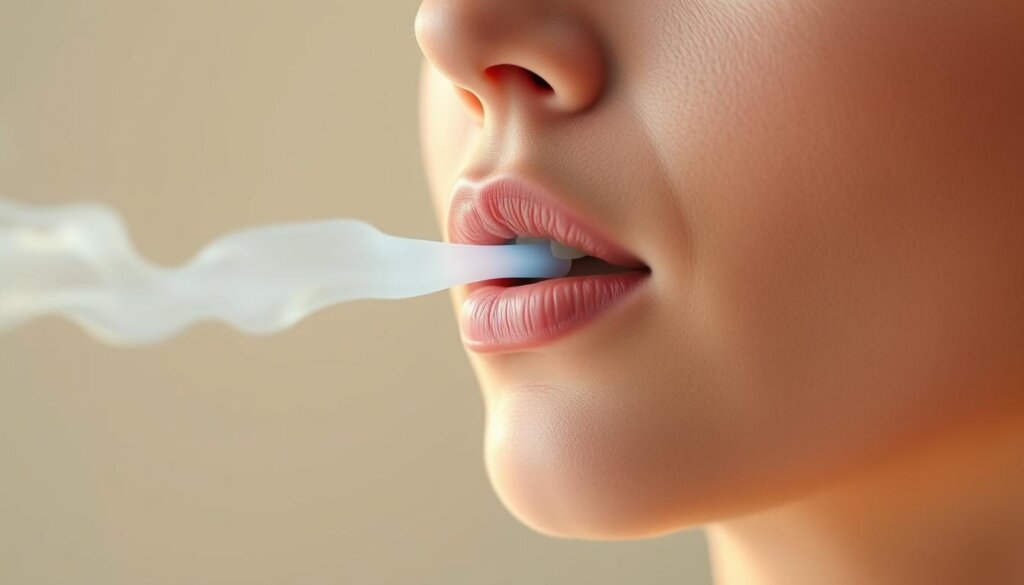
Bioavailability considerations and practical selection
Drinking enriched liquids offers the easiest daily administration and steady systemic exposure. Prioritize freshness, sealed containers, and labeled concentration. Consume soon after opening to keep dissolved content high.
Inhalation hydrogen gives rapid systemic rise and may suit acute clinical needs. Keep gas below 4–5% and use blended supplies with monitoring and trained staff. This administration is typically limited to supervised settings.
Topical gels and solutions deliver concentrated exposure to the skin. Occlusion can increase residence time and local uptake, making topical formats useful when the goal is surface healing.
| Route | Onset | Duration | Use case |
|---|---|---|---|
| Drinking (hydrogen water) | Moderate | Hours | Daily wellness, easy home use |
| Inhalation (hydrogen gas) | Fast | Short | Clinical, acute support |
| Topical | Local | Variable | Skin wounds, targeted care |
“Choose products that disclose concentration and testing; cap containers to limit gas loss.”
Practical tip: those in Malaysia may ask Wellness Group to match route to lifestyle. Learn about special situations such as use while pregnant.
Safety first: What studies say about tolerability and use at present
Available clinical data show that the approach is well tolerated when users follow clear protocols. Drinking enriched liquids and topical gels caused few adverse events in trials of healthy adults and patients.
Key precautions: inhalation must keep hydrogen gas below about 4–5% in air to avoid flammability. Proper administration needs trained staff, pulmonary assessment, and basic monitoring such as pulse oximetry.
Topical preparations are typically non‑irritating and suit sensitive skin when formulated correctly. Reported adverse events are minimal, but larger trials will help define rare risks.
- Follow manufacturer guidance on preparation, storage, and consumption to keep product quality high.
- Screening of respiratory function optimizes safety for those considering inhaled treatment.
- Use as a complement to medical care; people with chronic conditions should consult clinicians before use.
| Route | Safety note | Local support |
|---|---|---|
| Drinking formats | Well tolerated; freshness matters | Guidance available via Wellness Group |
| Inhalation | Requires monitoring and flammability limits | Pulmonary screening advised |
| Topical | Generally non‑irritating for minor injury | Patch testing recommended |
The overall effect in trials is favorable but cautious optimism is wise. For local instructions and product questions, visit a short guide on product care and cleansing or contact Wellness Group for personalized advice.
How to use hydrogen water to support cellular repair in daily life
A simple administration plan helps users test effects without disrupting habits or hydration needs.
Start with a modest daily dose that matches clinical experience. A practical starting point is 1–1.5 L/day of fresh enriched liquid, split across the day. This aligns with the randomized trial that used 1.5 L/day over four weeks and showed measurable antioxidant shifts in adults aged 30 and up.
Space intake to keep exposure steady: morning, pre‑workout, and mid‑afternoon are easy slots. Drink soon after opening and keep containers sealed to limit gas loss. Avoid heat and store in cool shade.
Daily tips and practical pairings
- Pair intake with antioxidant‑rich meals and 7–9 hours of sleep to boost effects on oxidative stress.
- Consider topical formats for local skin support after sun or minor irritation.
- Track recovery, energy, and skin texture; consult a clinician for persistent issues.
- Adjust total hydration to Malaysia’s climate and activity level; maintain electrolyte balance.
| Action | Why | Practical note |
|---|---|---|
| 1–1.5 L/day | Matches RCT dose with observed antioxidant gains | Split across 3 times; consume fresh |
| Morning + pre‑exercise | Supports energy‑intensive cellular processes | Helps steady exposure |
| Pair with sleep & meals | Synergy reduces oxidative stress | Focus on whole foods and activity |
“Consistency for at least four weeks helps reveal personal response and measurable shifts.”
Personalized guidance: message Wellness Group on WhatsApp at +60123822655 during business hours (Mon–Fri 9:30 am–6:30 pm; Sat–Sun 10 am–5 pm) for tailored timing and format advice.
Who may benefit: From active adults to those managing oxidative stress
Practical evidence points to benefits in exercise recovery, aging adults, and those exposed to pollution who face higher oxidative burden.
Active adults may appreciate modest antioxidant support to ease exercise‑induced oxidative stress. Athletes can pair a daily low‑dose regimen with nutrition and rest to help recovery and training adaptation.
Busy professionals with poor sleep or long commutes may use a simple daily routine to manage routine stress and environmental insults. Middle‑aged and older adults (≥30) showed larger antioxidant shifts in recent studies, suggesting age‑linked responsiveness.
Those with metabolic risk, cardiovascular or neurodegenerative disease risks, or heavy pollution exposure may consider adjunct strategies. Topical formats also appeal to people focused on skin resilience alongside systemic intake.
- Office commuters in Malaysian cities can integrate portable options into daily travel.
- Athletes can add intake during training blocks to support recovery.
- Travelers benefit from compact solutions to reduce trip‑related stress and dehydration.
- People with medical conditions should consult clinicians—this is an adjunct, not a replacement for prescribed treatment.
“Wellness Group offers tailored guidance to match goals, budgets, and schedules.”
Choosing quality hydrogen water in Malaysia
Pick products that deliver consistent, tested content rather than rely on claims alone.
The dissolved gas is only slightly soluble (~1.6 mg/L), so freshness and packaging affect retained concentration. Buyers should look for clear labeling, test data, and local approvals in Malaysia.
Concentration, freshness, materials, and testing you can trust
- Prioritize documented concentration (ppm or mg/L) with third‑party or in‑house testing and batch verification.
- Choose high‑barrier packaging to limit gas escape and follow storage guidance to preserve content.
- Opt for systems that are simple to prepare and consume promptly; permeable materials let active content leak out.
- Review manufacturer transparency on testing frequency, methods, and safety certifications relevant to Malaysia.
- For topical formats, assess formulation stability and occlusive carriers that extend contact time without irritation.
- Avoid confusing ozone or hydrogen peroxide devices with molecular systems; they are different technologies and risks.
“Wellness Group can help compare features, run demos, and guide product choice to match routine and budget.”
Talk to Wellness Group: Personalized guidance, WhatsApp, and business hours
Wellness Group makes it easy to get tailored guidance on dose, delivery, and practical use in Malaysia.

Chat on WhatsApp +60123822655 for tailored recommendations
Message Wellness Group on WhatsApp at +60123822655 to get product advice matched to goals, schedule, and budget.
The team explains concentration, freshness, and storage so each serving keeps its active content. Ask about pairing systemic intake with topical options for skin and recovery.
Visit during business hours: Mon–Fri 9:30 am–6:30 pm; Sat–Sun 10 am–5 pm
Drop by during business hours to see demos and learn best practices. Staff will walk through the process and show measurement and testing methods used locally.
- Get help selecting delivery formats that suit office days, workouts, or travel.
- Learn how to integrate hydrogen and water approaches with sleep, nutrition, and activity to reduce stress on cells.
- Discuss safe use, timing tactics, and simple tracking to observe treatment effects over 4–8 weeks.
- Receive updates on new products, studies, and local events to stay informed.
| Service | What they explain | How it helps |
|---|---|---|
| Product matching | Concentration, packaging, freshness | Better consistency and value |
| Use planning | Timing, dosing, topical/systemic mix | Practical daily routines |
| Evidence review | Relevant studies and expected effects | Informed decisions |
“Wellness Group is committed to friendly, practical guidance to help you start and stay consistent.”
Conclusion
Conclusion
In summary, practical human and animal studies show measurable benefits when used consistently.
Clinical data found improved antioxidant capacity in adults ≥30, less PBMC apoptosis, and downregulated TLR‑NF‑κB signaling after daily intake. Animal work supports faster wound closure, better outcomes after ischemia‑reperfusion, burns, and radiation injury.
The proposed mechanisms include direct radical scavenging, Nrf2/HO‑1 activation, and mitochondrial support. Delivery choices—drinking, topical gels, and supervised inhalation—let users match routine and goals while keeping safety limits.
Next steps, contact Wellness Group on WhatsApp at +60123822655 or visit Mon–Fri 9:30 am–6:30 pm; Sat–Sun 10 am–5 pm to get personalized product and timing advice and start with confidence.
FAQ
What does Wellness Group offer related to hydrogen water and cellular repair?
Wellness Group provides products and guidance focused on molecular hydrogen delivered in drinking form to support cellular resilience. They explain mechanisms, offer quality-tested options, and give practical advice on use, safety, and integration with lifestyle habits.
Why does this guide on molecular hydrogen and cellular repair matter today?
Oxidative stress and age-related inflammation affect many people. This guide summarizes current human and animal research so readers can make informed decisions about using molecular hydrogen as a complementary antioxidant approach alongside diet, exercise, and medical care.
How do reactive oxygen species (ROS) cause cellular damage?
ROS damage DNA, lipids, and proteins, which can impair cell function and trigger inflammatory and cell‑death pathways. Persistent oxidative stress contributes to chronic conditions, impaired healing, and accelerated aging.
What happens when redox balance breaks down in the body?
When antioxidant defenses fail, inflammation increases and signaling pathways like NF-κB and TLRs can shift toward chronic activation. That promotes tissue injury, cell death, and progression of disease mechanisms.
What is molecular hydrogen and how does it differ from inhaled gas?
Molecular hydrogen is a small, neutral molecule that can be delivered dissolved in drinking fluid or as an inhaled gas. Drinking dissolved hydrogen targets systemic bioavailability with ease and convenience, while inhalation can achieve higher tissue exposure in controlled settings.
How does hydrogen act as a therapeutic antioxidant without blocking beneficial signals?
It selectively reduces highly cytotoxic oxygen radicals while sparing milder ROS that serve signaling roles. That selective action helps limit oxidative injury without broadly suppressing redox signaling essential for normal cell function.
Does it influence cellular antioxidant systems like Nrf2/HO-1?
Studies show molecular hydrogen can activate Nrf2 and upregulate antioxidant enzymes, supporting endogenous defenses and improving resilience against oxidative insults.
Can it protect mitochondria and reduce ROS generation?
Evidence from preclinical work suggests it stabilizes mitochondrial function, lowers electron leakage, and reduces excessive ROS production, which helps preserve energy metabolism and cell survival.
What does human evidence show about antioxidant effects and immune markers?
Randomized trials report improved antioxidant capacity, reductions in peripheral blood mononuclear cell apoptosis, and modulation of NF-κB signaling. Some studies also note favorable changes in inflammatory cytokines and clinical markers.
Are effects different by age?
Data indicate adults aged 30 and older may experience more pronounced antioxidant benefits, possibly because of higher baseline oxidative burden compared with younger adults.
How does molecular hydrogen affect inflammatory pathways?
It can downshift proinflammatory signaling through pathways such as TLR-NF-κB and reduce cytokines like IL-1β, IL-6, IL-8, and TNF family members, promoting immune balance during stress or injury.
What have animal models revealed about therapeutic potential?
Rat and mouse studies show protection in ischemia‑reperfusion injury, reduced oxidative injury markers in neurodegeneration models, and enhanced tissue repair. These models help explain mechanisms but require careful translation to humans.
Could this approach support healthy aging and genomic stability?
Research suggests benefits for genomic maintenance, telomere stability, and lowering senescence markers, indicating potential to support healthy aging when used with other lifestyle measures.
How might it aid tissue repair and wound healing?
By reducing oxidative stress and inflammation, it can favor the transition from inflammatory to proliferative phases, improving closure rates. Both topical and systemic formats have shown promise in preclinical and early clinical work.
What delivery options exist and how do they compare?
Options include drinking dissolved molecules, inhalation, and topical formulations. Drinking offers convenience and daily use, inhalation gives higher exposure in clinical contexts, and topical use targets local wounds. Bioavailability and clinical goals guide choice.
Is it safe to use regularly?
Current studies report good tolerability in short- and mid-term use. Users should follow recommended concentrations and consult healthcare professionals if they have medical conditions or take prescribed treatments.
How should someone use dissolved molecular hydrogen in daily life?
Practical guidance covers timing around meals and exercise, suggested intake ranges, and combining use with antioxidant-rich diet, regular activity, sleep, and stress management for best outcomes. Personalized plans work best.
Who is most likely to benefit from this approach?
Active adults, those managing oxidative stress from lifestyle or chronic conditions, and people seeking supportive, noninvasive antioxidant strategies may benefit. Healthcare consultation helps identify fit and safety.
How can someone choose high-quality products in Malaysia?
Look for independent concentration testing, freshness indicators, appropriate packaging materials, and transparent manufacturing. Certifications and verified lab results help ensure efficacy and safety.
How can someone contact Wellness Group for personalized guidance?
They can chat on WhatsApp at +60123822655 for tailored recommendations and visit during business hours: Mon–Fri 9:30 am–6:30 pm and Sat–Sun 10 am–5 pm.
